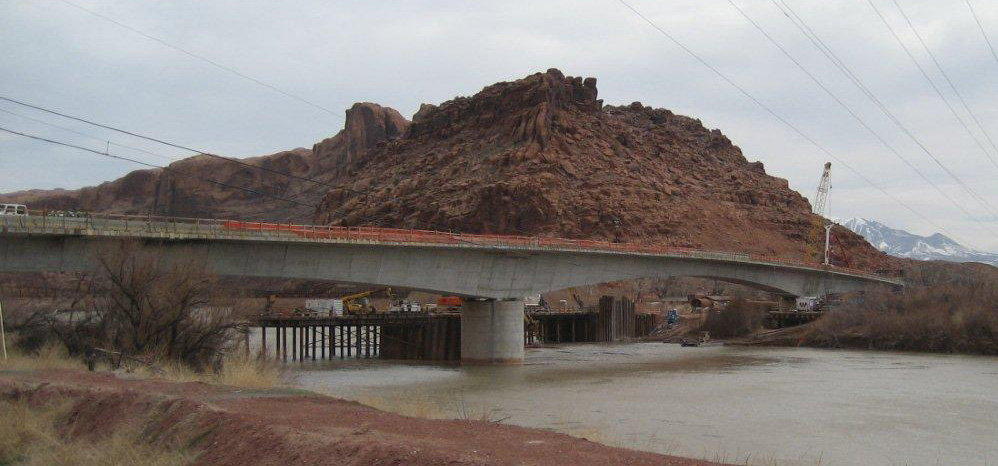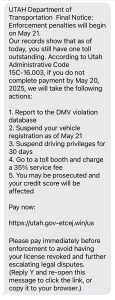Beauty marries function
June 28, 2010
The elegant Colorado River Bridge, constructed in Southern Utah, is designed to improve the transportation system as well as blend into the red-rock desert landscape.

Stan Johnson, Utah Department of Transportation (UDOT) Bridge Planning and Studies Engineer visited the project last year and sent this great narrative about his visit. Thanks, Stan!
A visit to the Colorado River Bridge construction site:
There I was in the doghouse, two hundred miles from home, and more than a stone’s throw off the ground. As I climb up the small, wooden ladder leading deeper into the structure—into what could be a claustrophobe’s nightmare— however, I’m actually rather excited: I’ve been invited to see the progress being made on the new SR-191 bridges over the Colorado River in Moab.
I’d seen the artist’s vision on paper—the calm, flowing curves designed to match the famous Landscape Arch; the rich earth toned skin of the structure groomed to naturally mesh with a world-famous milieu that includes the nearby Arches National Park. But right now, I’m in the hard, gray guts of what amounts to a concrete stick in the mud; and it’s no more beautiful than the old bridge it’s meant to replace (which, perhaps ironically, had won an “honorable mention” in a competition for “most beautiful bridges built in 1955.”)
The nerd in me didn’t care about that. In fact, the long, green fingers of rebar jabbing out at the pale Moab horizon practically scream “photo op!” Being inside the large, concrete box set on the center pier (known colloquially as “the doghouse,” and built specifically to allow inspectors access to the bridge’s interior) makes me feel more as though I am being let in on some great secret rather than just being caged by reinforced concrete. Besides, it affords very real shelter from the August sun.
As I move around the manmade cave, I listen to the chatter from the other engineers, inspectors, and contractors as they talk about how they will raise this behemoth over the river. It will be done the same way you eat an elephant: piece by piece.
The contractors needed to purchase a pair of large, million-dollar chunks of equipment known as “form travelers” in order to get the job done. The form travelers would carefully “see-saw” their ways out from the central pier, slowly crawling towards other supports that aren’t yet more than a few steel piles still being hammered into the river bed from what I can see, carefully adding new segments to the bridge. It’s going to take a while.
Suddenly, nearly a year has passed, and I’m sitting safely in my office, my Moab confinement only a pleasant memory. I click a link, and in an instant (or at least what passes for an “instant” with my computer), I can see the naked-but-complete first structure on my screen. Another click, and I watch months fly by in time-lapse. One moment, the old structure is there, the next moment, it’s gone, revealing its sleek, new replacement. And I think it looks fantastic.
Not everyone shares my “inner geek,” but the folks at FIGG really know how to design a bridge that’s worth looking at; and there will be two of them over the river by the time it’s all said and done.
The new structures aren’t just pretty faces, however. They’ll better serve the public by doubling the number of traffic lanes (and for those who know Moab, you’ll know what a bottleneck the old bridge was), and adding safety features for motorists and pedestrians. Beyond the bridge improvements, upgrades to trails will enhance an already “adventurer-friendly” environment.
To top it all off, the whole job is being done in as “eco-friendly” a manner as possible, ensuring a minimal impact to the Colorado River and the surrounding world-class scenery.
I may not be a jeep nut, but now I’ve got one more reason to go to Moab. How fitting that the reason would be a few new arches.



